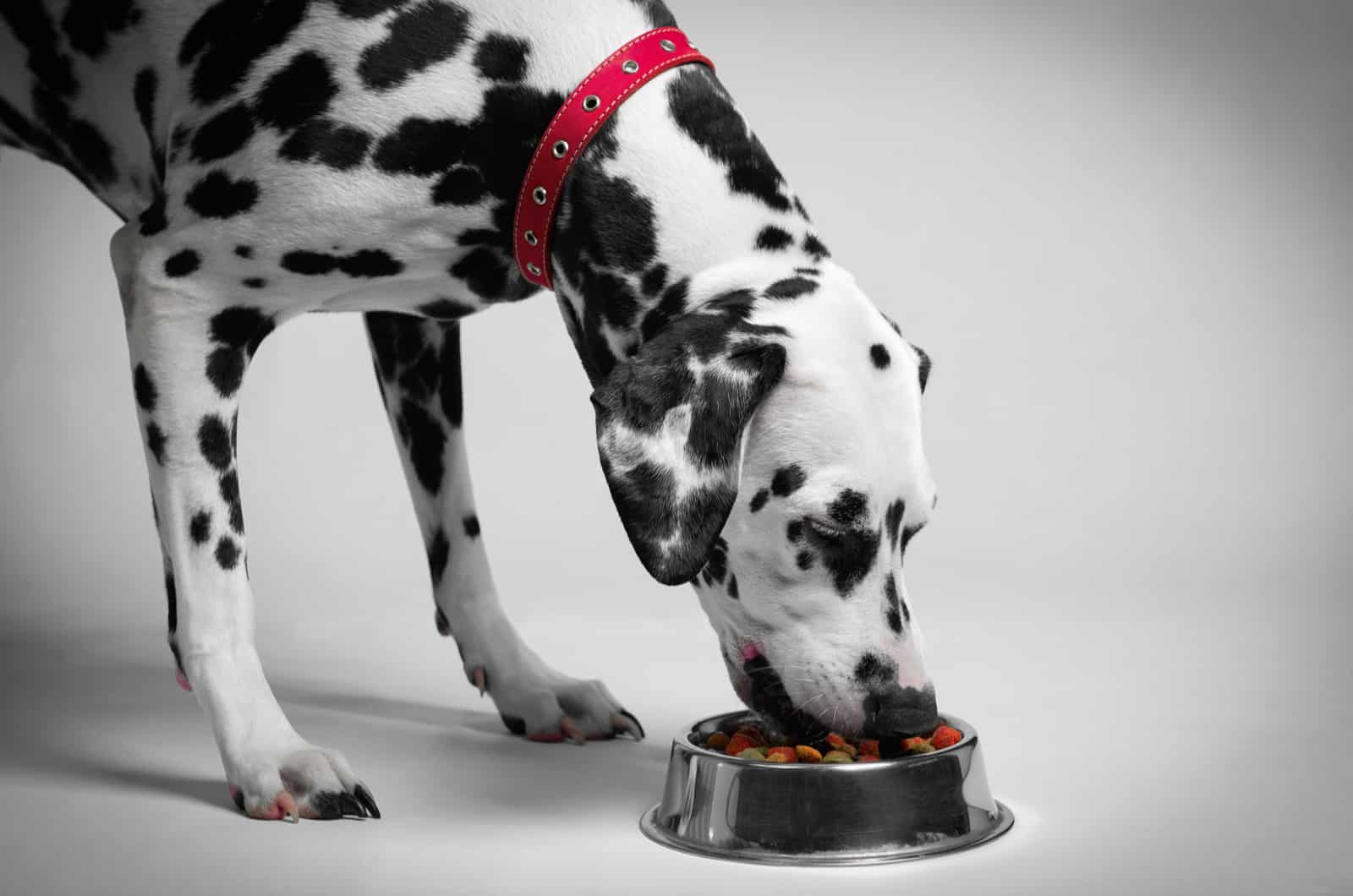A Dalmatian feeding chart is one of the essential tools for first-time owners of this magnificent breed that serves as a general guideline on the proper feeding of these pups.
From puppyhood to senior years, a Dalmatian’s diet should be planned carefully in order to avoid obesity or any other potential health issues.
The process of feeding a Dalmatian pup might seem challenging, but if you follow the instructions from dog experts and vets, along with general guidelines, you will find it to be a pleasant experience.
We are sure that this guide on feeding your Dalmatian pup will be of great help and that it will benefit both you and your furry companion.
Dalmatian Feeding Chart
[table id=627 /]
Dalmatian Puppy Feeding Chart By Months
Breastfeeding is the primary source of nutrition for young Dalmatian pups who are less than one month old.
During this period, Dalmatian breeders and dog owners don’t have much work around the puppies, as they’re completely dependent on their mothers.
RELATED: Top 6 Best Dalmatian Breeders In The UK (2022)
Breastfeeding is crucial during the first few days of the puppies’ lives, as the mother canines produce colostrum which is extremely important for the growth of Dalmatians and any other dog breed in general.
This type of milk contains necessary nutrients, including antibodies and hormones that are responsible for a puppy’s growth and development.
However, once this phase has passed, owners of pups can begin the process of weaning their puppies in order to give them other nutrient sources in addition to the mother’s milk.
The weaning process can begin after the first three to four weeks of the pup’s life by adding age-appropriate dog food to their diet.
Post-Weaning Process
Canned food or kibbles mixed with mother’s milk or puppy formula are the best types of food you can offer to a pup that is in the process of weaning.
However, after they turn two months of age, Dalmatian puppies will require more than two cups of dry food to meet their nutritional needs.
This serving size grows even further as additional body changes occur during the period from the fourth month to the ninth month of the puppy’s life.
These changes in the body, together with a rise in activity level, support the high fat and protein demands of Dalmatian puppies.
The proper consumption of proteins and healthy fat is essential to the healthy growth and development of the pup’s muscles, skin, and fur, as well as its immune system.
Keep in mind that all of the information shown here is based on food that has been specially prepared to meet the nutritional needs of Dalmatian pups.
If you choose to go for another type of dog food (canned, home-cooked, or raw), you can expect these values to differ, so keep in mind that you need to follow the nutritional requirements of these doggies.
For example, a two-month Dalmatian will require up to 1050 kilocalories daily while an eleven-month pup will be satisfied with about 1450 kilocalories per day.
Adult Dalmatian Feeding Chart
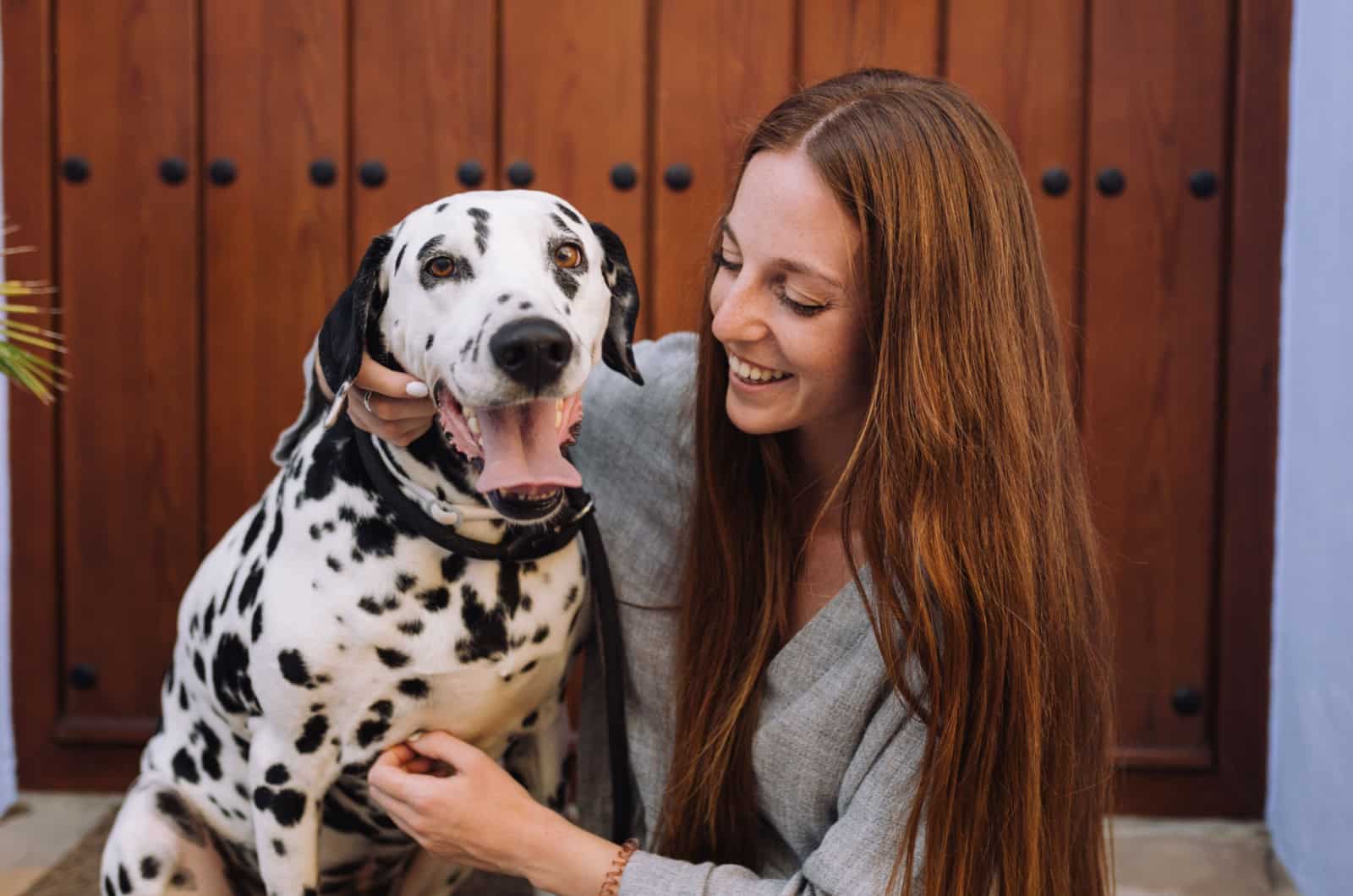
Even though some Dalmatian canines don’t achieve full maturity until they’re sixteen months old, the majority of twelve-month-old Dalmatians are already regarded to be adults.
This is important to mention, as mature Dalmatians are considered to have increased dietary requirements.
Therefore, the amount of food that an adult Dalmatian consumes will vary from one individual to the next based on factors such as their age, size, level of physical activity, gender, puppy feeding schedule, and whether or not they have been neutered or spayed.
To be more specific, bigger male Dalmatians demand a diet that has a greater quantity of calories. This is also applicable to Dalmatians that are completely healthy and fiercely energetic.
It is important to keep in mind that a greater caloric need corresponds to a bigger serving size, which can easily cause weight gain that might be detrimental to the canine’s health if it doesn’t have the chance to burn additional calories.
One of the things that you should keep in mind is that, because of their genetic makeup, the majority of adult Dalmatians are unable to properly transform even low purine levels from their food into allantoin.
Instead, the purine molecules in their bodies are simply transformed into uric acid, which can eventually lead to stones in the urinary tract.
Senior Dalmatian Feeding Chart
Dalmatians that are over seven years of age have a lower caloric need since they are less active than the younger representatives of their breed.
Less caloric high-quality dog food for seniors doesn’t only keep the dog’s weight in balance, but it also helps lower the risks of developing health issues such as obesity, cancer, osteoarthritis, and immune system disorders.
As a result, elderly Dalmatians that consume diets reduced in calories will likewise have a higher life expectancy, which is great, considering that Dalmatians usually live up to 12 years on average.
Because prebiotic fibers are known to have a lower caloric content than other fibers, kibbles that contain this type of fiber are an excellent choice for elderly Dalmatians.
Keep in mind that, before you switch your Dalmatian dog over to the senior diet, you should consult with a vet that you trust.
This will ensure that you are able to prepare a nutritious meal for your senior pup and offer it all of the appropriate nutrients that are necessary for its age and health.
About three to three and a half cups per day are more than enough servings for a senior Dalmatian.
Just keep in mind that they should be on a low-purine diet to avoid any health complications during their senior stage of life.
How Often Should You Feed Your Dalmatian?
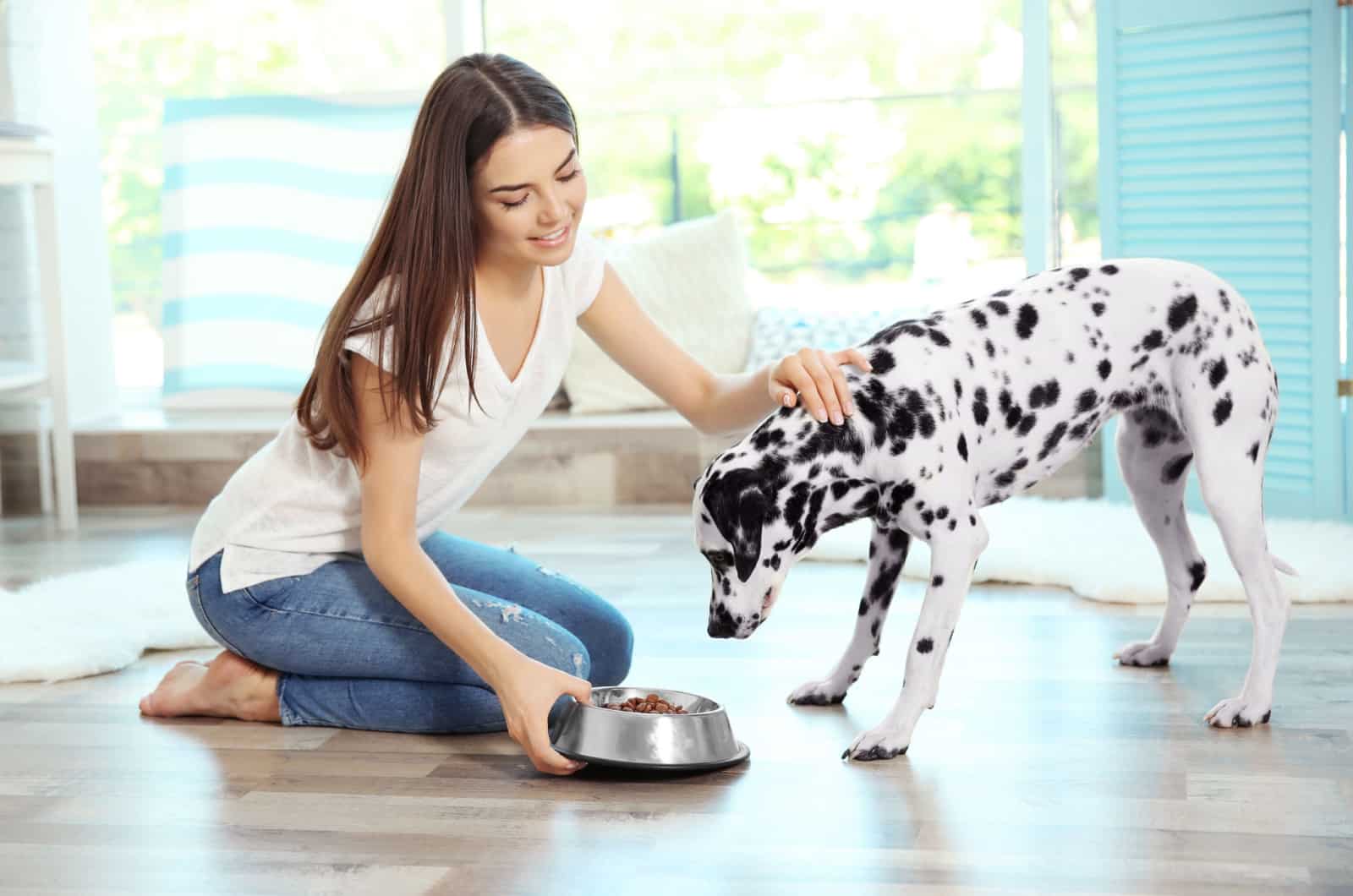
The number of meals that a Dalmatian canine should have each day is determined by its age. Essentially, younger Dalmatian canines should have at least three to four meals every day.
On the other hand, adult Dalmatians could easily have one to two feedings per day, while senior Dalmatians won’t need more than one feeding per day.
Of course, these recommendations might change depending on the quantity of food that is provided for every meal.
For instance, some dog owners choose to feed their adult Dalmatians three meals per day, although they go with lower portions for each meal.
When it comes to younger pups, it’s important to stress that they will require more frequent feedings than their elderly counterparts, as they spend more energy throughout the day.
Also, Dalmatian puppies will require feedings more often than dogs in other stages of life as they’re beginning the transition from their mother’s milk to regular dog food.
Puppies will require smaller portions more often until their stomach is completely used to this type of food.
Providing your Dalmatian puppy with more frequent, smaller meals is easier on the digestive system and helps maintain a regular level of energy throughout the day.
Some owners of Dalmatians choose to give their pets the option of free-choice feeding. On the other hand, many vets don’t agree with this type of feeding since Dalmatians have a tendency to overeat.
Common overeating can cause bloating and eventually lead to obesity, which appears quite often in big dogs like Dalmatians.
What Is The Best Time To Feed Your Dalmatian?
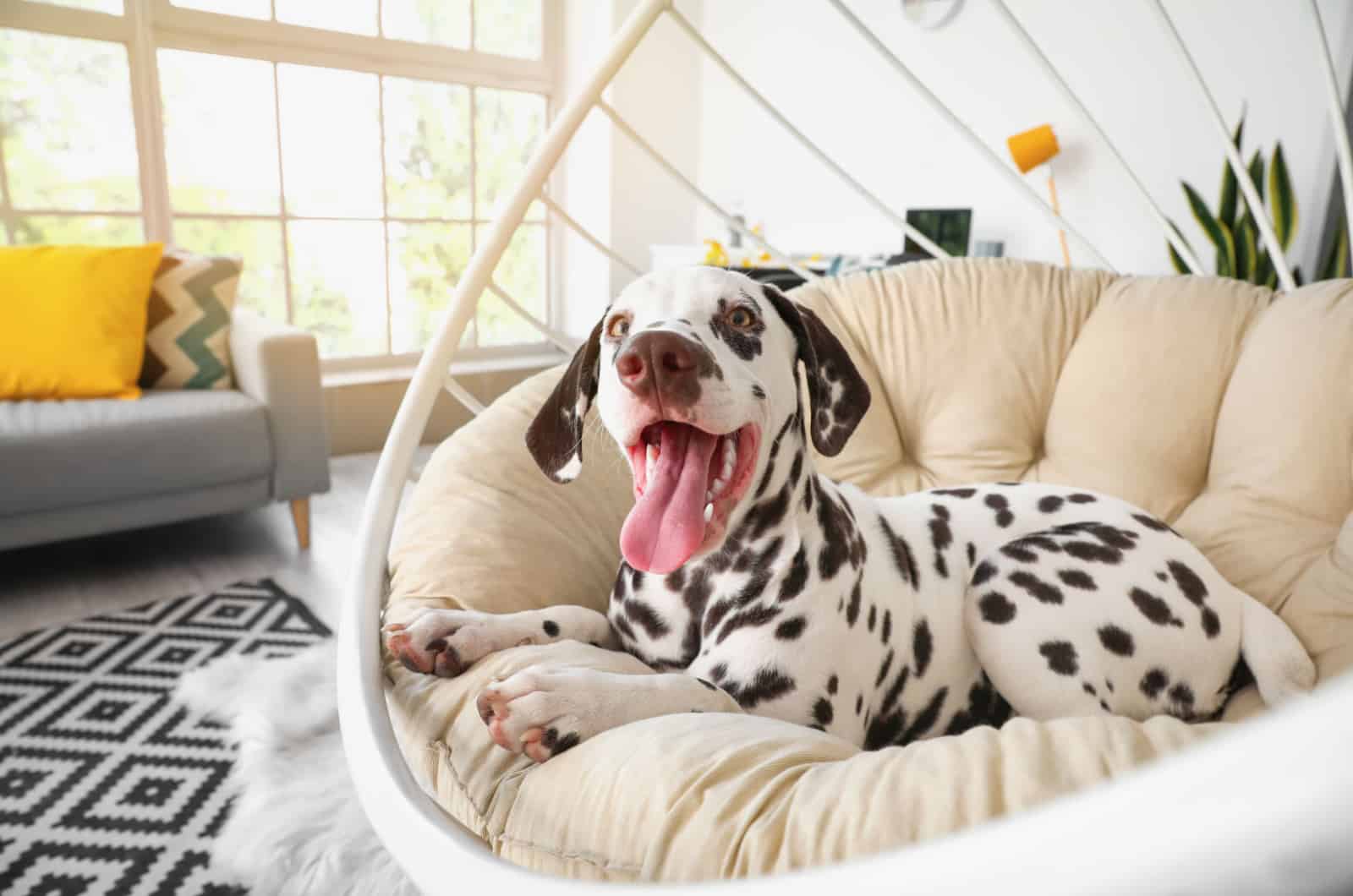
There is no set schedule for when Dalmatians should be fed. However, it is recommended that Dalmatian pups be fed three times a day, as breakfast, lunch, and dinner.
Adult Dalmatians are often given food twice a day, once in the morning and once in the evening, but senior Dalmatians usually receive food once a day, either during the morning or the evening.
Most people would agree that the optimum time for dog meals would be around seven in the morning and five in the afternoon.
This way, the pup’s stomach will have enough time to digest all the food, so it won’t have any negative effect on Dalmatian’s health.
Of course, this is just a suggestion, and it’s natural that not all people will be able to give their pups meals at the exact same time every day.
It’s also important to mention that, in order to avoid hyperacidity, it is recommended that there is no more than a twelve-hour interval between meals.
Because of this, the following meal for your Dalmatian, assuming it eats twice per day and you actually feed the dog at seven in the morning, shouldn’t be any later than seven in the evening.
What Is The Best Food For Dalmatians?
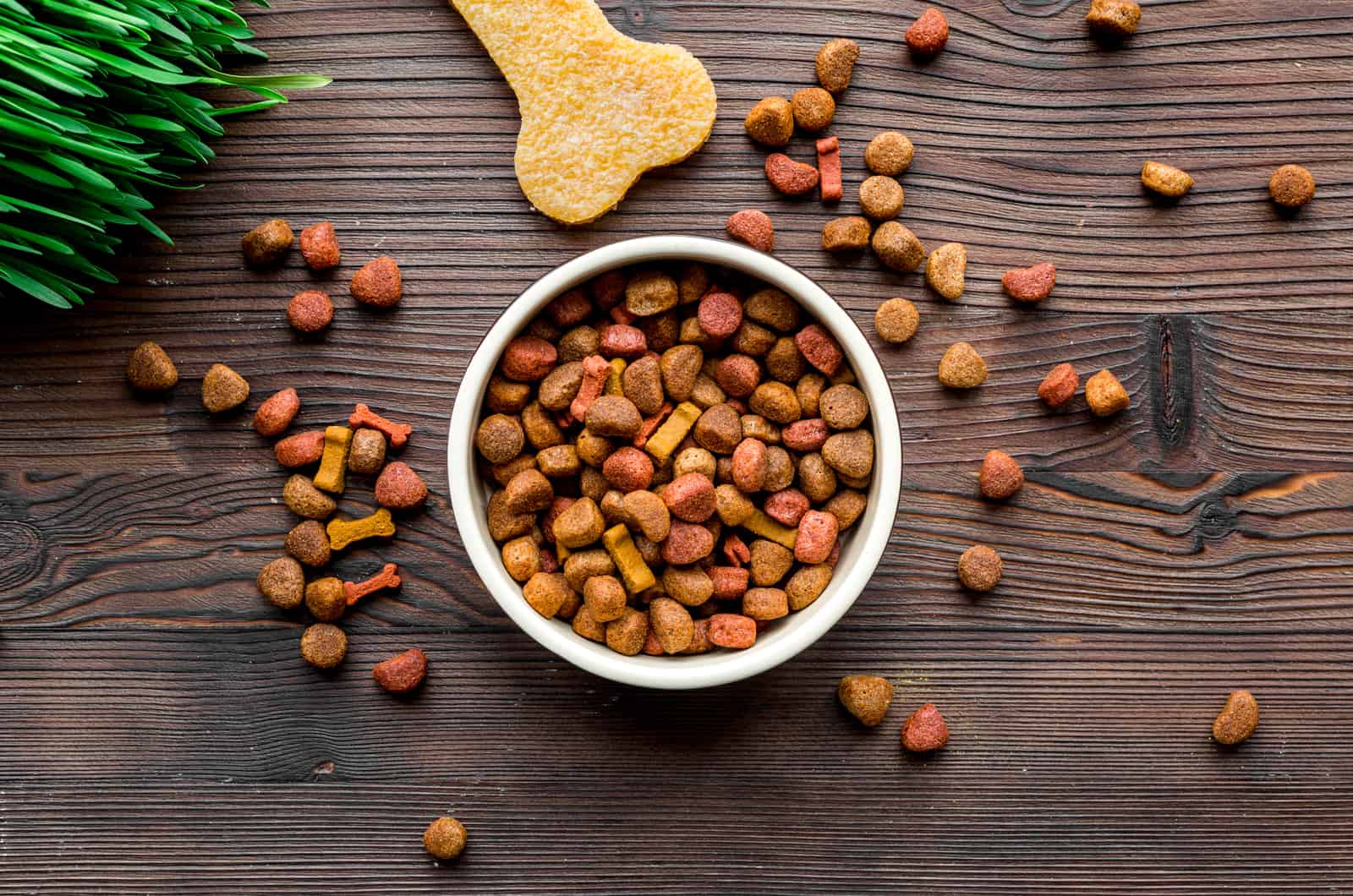
In order to define which food is the best for a Dalmatian pup, it is important to say that the quality of the food should be decided upon the ingredient list.
If it can fulfill all of the canine’s nutritional needs on a regular basis and doesn’t contain any harmful ingredients, it’s good enough for your pet.
In addition to this, it should be loaded with the vitamins and minerals that contribute to the upkeep of your Dalmatian’s organism so that it continues to function properly.
However, it is important to keep in mind that the dietary requirements of a Dalmatian do not remain the same over the entirety of the animal’s life.
Therefore, the answer to this question is going to change depending on how old your dog is as well as any health problems that it could have.
The following is a list of some of the best foods for your Dalmatian.
Wet Food
Not all pups love the same type of food, therefore, it’s natural if your pet isn’t a fan of kibbles. In that case, it will probably be a fan of wet food, which is much softer and easier to chew.
Canned food has a high proportion of moisture, which can help to keep your Dalmatian hydrated and prevent urinary troubles.
Unfortunately, urinary issues can be caused by a number of different conditions that most Dalmatians are prone to.
Additionally, the majority of wet foods are low in carbohydrates and calories, making them an excellent choice for overweight and senior Dalmatians.
Dry Food
You are free to feed your Dalmatian any dry food you choose, but it is recommended that you go with kibbles that are designed specifically for Dalmatians of a certain age.
Because of this, they may be less likely to acquire dietary-related conditions like obesity, pancreatitis, or bladder stones or to have such conditions triggered at all.
Kibbles are favorites among both dog owners and canines as they can be used either for a meal or as dog treats, which makes a good reward after their daily exercise session.
Home-Cooked Meals
Home-prepared meals are a bit more complicated, as they require time and additional work to prepare them.
However, this is an excellent choice for Dalmatians that are finicky eaters or sensitive to certain food preservatives or additives.
Also, almost every recipe for home-cooked meals can be adapted to fit the dietary requirements of your Dalmatian pup, so you have more control over the type of food and amount of nutrients that your dog takes during each meal.
In addition to this, you might want to give your Dalmatian some vitamins, minerals, or fatty acids every now and then just to make sure that it receives enough nutrients.
You should consider giving your long-haired Dalmatian omega-3 fatty acid supplements in order to promote the development of a healthy skin and coat.
Of course, you can add some of these supplements to a short-haired pup’s diet as well, as they can only benefit from it.
In the meanwhile, you may provide your senior Dalmatian with multivitamins and bone supplements to ensure that they’ll get everything they need in one meal.
Low-Purine Raw Food
A Dalmatian dog’s diet can be based on raw food as well. This isn’t an issue only if owners are one hundred percent sure that the raw meals being served contain low purine levels only.
Ingredients like rice, lentils, eggs, kidney beans, ox brains, and crayfish are just some of the foods that don’t contain a high level of purines, along with full-grain cereals.
The best way to know what type of diet your puppy needs is by consulting a veterinarian or a dog food nutritionist who will give you specific guidelines on which food is suitable for your Dalmatian pup.
What Is Purine?
This is a naturally occurring chemical molecule that may be discovered in the center of the cells of both plants and animals.
Endogenous substances are those that are produced by the body, whereas exogenous substances come from outside the body (entering the body via food).
The body will metabolize purines that come from exogenous substances. The liver is responsible for breaking them down, and the waste product is known as uric acid.
The vast majority of uric acid dissolves unproblematically into the blood, where it is subsequently filtered out by the kidneys and expelled from the body.
Crystals can form in the blood if there is an excessive amount of uric acid in the bloodstream for the body to metabolize. These crystals can then lead to further problems, such as kidney stones.
Which Food Is Low In Purine?
Carrots, potatoes, and parsnips are all examples of root vegetables that have a relatively low purine content.
Rice and eggs are two other common examples of foods that have a low purine content.
If you want to provide your dog with a diet that is low in purine, you should think about feeding them more digestible types of meat, like chicken or fish, and steer clear of less digestible types of meat, like beef.
It is strongly recommended that you do not give your dog any leftovers or scraps from the table and that you provide your pet with access to clean water at all times.
Which Foods Should Be Avoided?
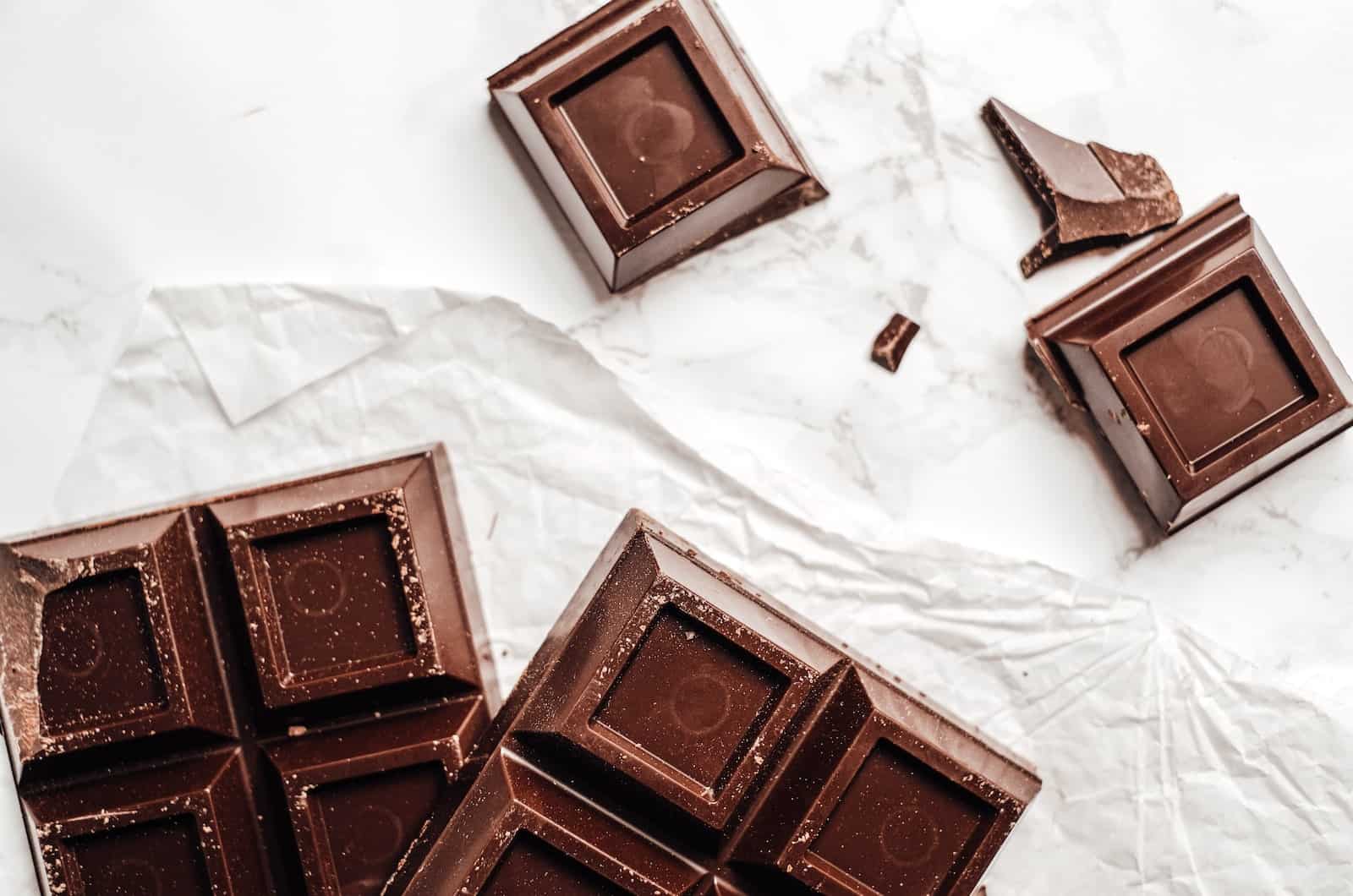
As we mentioned in the paragraphs above, the type of food that should be avoided by any means is one that is rich in purine content.
Dalmatian owners should always keep in mind that this dog breed is more likely to develop kidney stones if they consume meals high in purines.
Some examples of foods that are known to have high levels of purines are brewer’s yeast, calf’s sweetbread and liver, as well as the heart, spleen, and lungs of a pig.
Meanwhile, it’s common knowledge that hog, chicken, cattle, and fish all contain a reasonable amount of purine. Your Dalmatian is allowed to ingest foods containing these meats, but it should still be done so in moderation.
Other Foods That Aren’t Good For Dalmatian Pups
There are certain foods that aren’t recommended for canines in general, regardless of the purine content in them.
These foods should be avoided by Dalmatian pups as well because of the negative effects they might have on the dog’s digestive system and other organs.
These ingredients are to be avoided in a Dalmatian’s food:
• Chocolate – Sugar, in general, is the nemesis of dog’s health. It can be detrimental to their wellbeing as it can upset their bellies and cause diarrhea, bloating, and even vomiting.
However, sugar isn’t the only issue. Chocolate contains theobromine, which is considered a toxin that a dog can’t digest. This substance is similar to caffeine that can cause health problems for canines as well.
• Garlic and onions – Dogs shouldn’t eat garlic because it contains a toxin known as thiosulfate.
Although thiosulfate is not hazardous to people, it harms canines’ red blood cells, which are in charge of transporting oxygen throughout the whole body.
• Macadamia nuts – This type of nuts can be hazardous to pooches, as it leads to a health condition known as muscle weakness, which can cause lethargy, bloating, vomiting, hyperthermia, and other health issues.
They also contain high levels of fats. Knowing that Dalmatians are already prone to obesity, additional calorie intake, especially of fats, can cause an increase in their weight.
• Dairy products – Canines can consume their moms’ milk, but any other dairy product might make them ill.
Dogs are unable to adequately metabolize certain sugars and essential fats due to a lack of digestive enzymes.
• Sweets and soda – Do not give your pup any processed sugar-rich foods. Canines can develop the same side effects as humans who consume excessive amounts of sugar, including obesity, dental disease, and potentially diabetes.
It can even cause liver failure in some cases, especially if dogs eat a high amount of foods rich in sugar.
• Raisins and grapes – These are popular and nutritious snacks for humans but not for canines, as they can cause harm to their kidneys.
It’s still unknown what exactly is toxic in this type of fruit, except for the sugar level. However, there has been a great number of canines with similar symptoms which occurred after eating grapes or raisins, so they have been put on the list of the foods to avoid.
• Caffeine – Caffeine can be hazardous since it causes hypertension and leads to cardiac diseases.
Additionally, dogs may experience seizures or lose control of their muscles. Diarrhea and vomiting are two digestive side effects of caffeine.
• Alcohol – Because canines cannot metabolize alcohol, any drinks, meals, or household items that contain alcohol in any form are hazardous and potentially dangerous.
Fatigue, respiratory failure, and a critically low temperature are all consequences of giving alcohol to canines.
What If My Dalmatian Is Overweight?
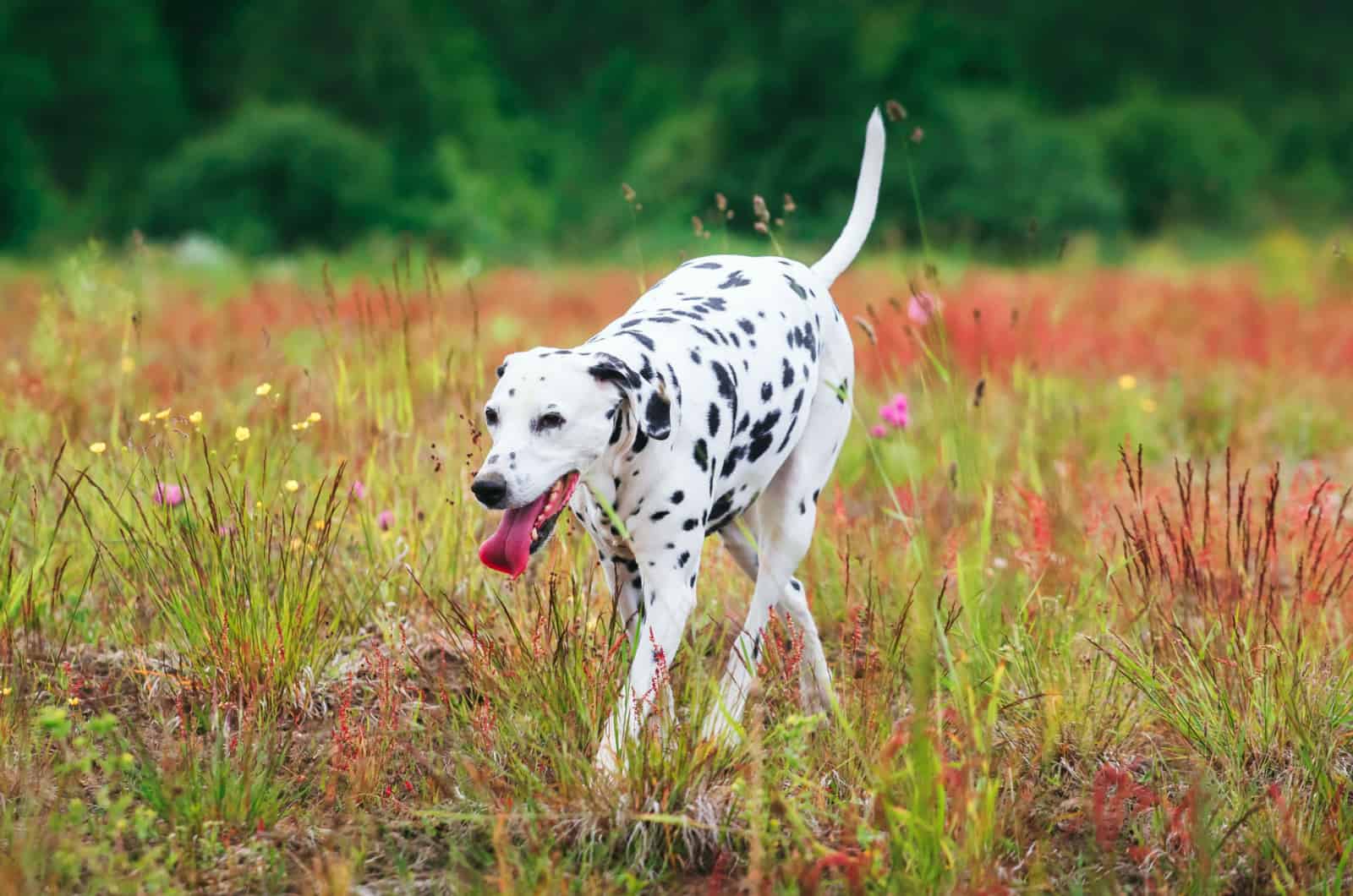
Dalmatians are believed to be more prone to excessive weight gain than the majority of other breeds because of their size and appetite.
As a result of this, some of these canines end up with an abnormally large amount of excess weight which is disproportionate to their height.
Unfortunately, if nothing is done in time, weight gain might not be the only issue that Dalmatians will have to face.
To prevent this from happening, you need to work together with your reputable veterinarian to create an appropriate diet for your overweight canine.
In an ideal world, the appropriate diet for an overweight doggie would include foods that are lower in calories, such as wet meals packed in cans.
Kibbles can also be used, but only if they’re meant for weight loss. You can check the food label of each product to make sure that the food is appropriate for your pup,
Lowering the number of foods that your pet eats during each meal and the number of treats that it receives are both helpful tactics for weight decrease.
All of these strategies for modifying your dog’s nutrition, however, will be rendered pointless if you fail to adhere to them and do not provide your dog with an adequate amount of daily activity.
How To Switch From One Food To Another?
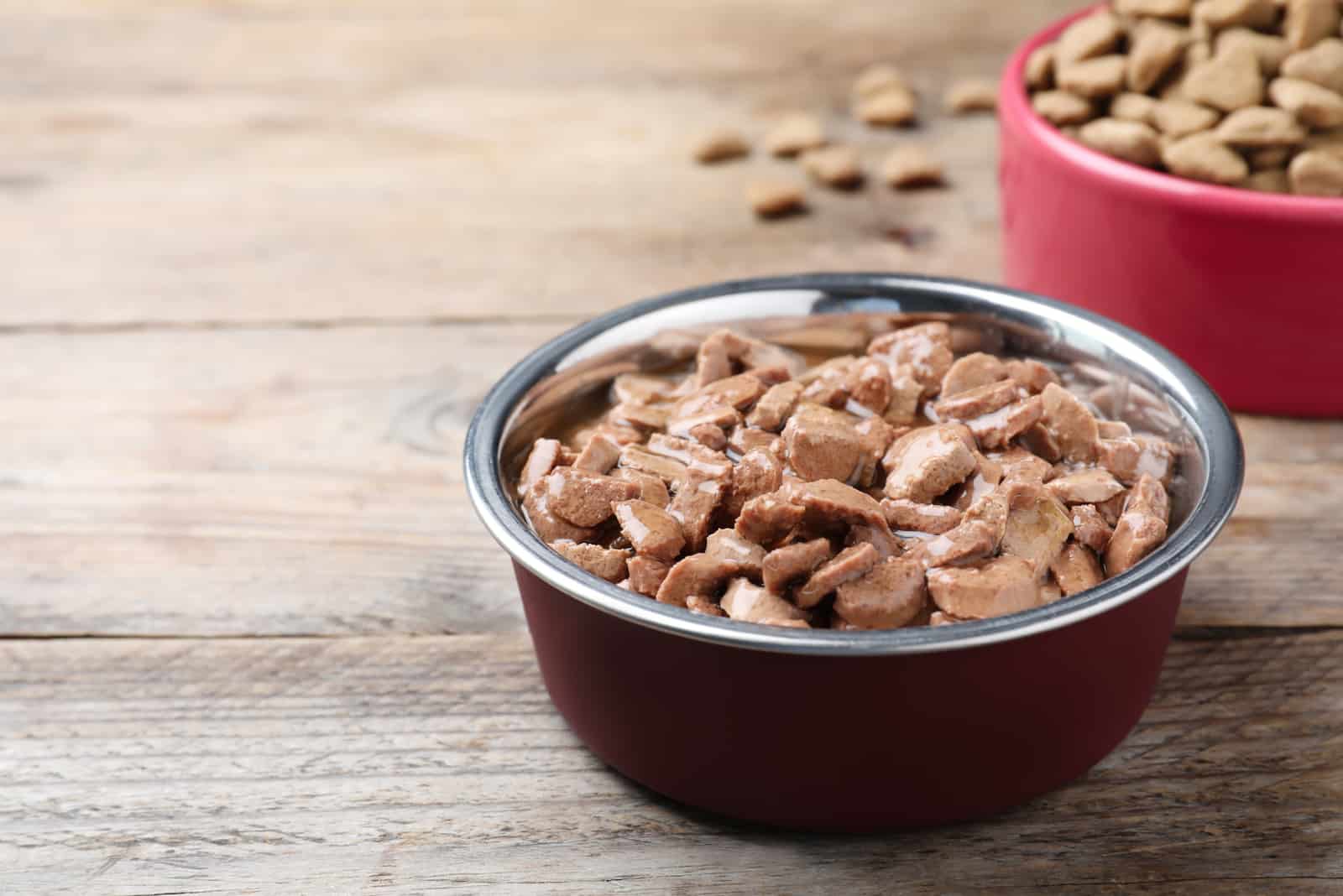
You are aware at this point that the nutritional requirements and the amount of food that Dalmatians need on a daily basis change according to their age.
There will be certain occasions in your pup’s life where you will have to introduce foods it hasn’t tried before in order to satisfy its nutritional requirements.
Try not to rush your Dalmatian into eating new foods. Instead, you can mix it with foods that it’s used to until your pup accepts it.
If you make a rapid change to a new type of Dalmatian food, your pet might experience decreased appetite, nausea, and diarrhea.
Before making a complete move to a new diet, you have to start by giving the Dalmatian a taste of the new food by offering them a tiny amount at first.
After your dog has become accustomed to the new food, you may gradually increase the amount of it, mixed in with the familiar food.
You should continue this process until your dog fully embraces the new diet without exhibiting any signs of resistance.
Health Issues Related To Dalmatian’s Diet
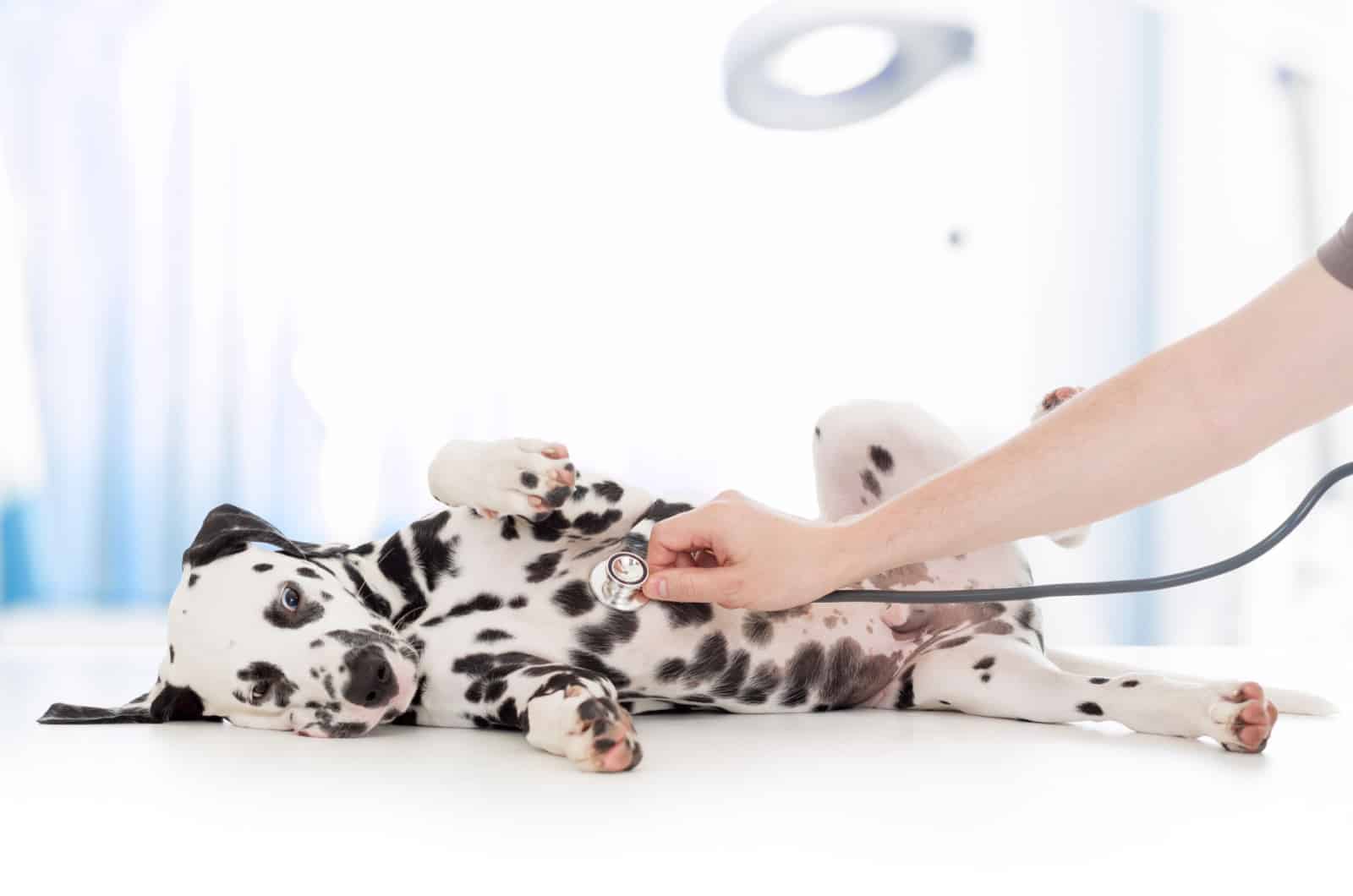
Urinary Stones
Dalmatians have a significant deficit in their urinary system since they are prone to developing urinary stones during their lifetime.
Breeds with healthy urinary systems are able to digest uric acid and harmlessly excrete it in their urine. Uric acid gathers as crystals in Dalmatians, where it can congeal into bladder stones.
Roughly one-third of males in the breed are stone formers. They’re more susceptible to urinary stones, as 95% of the stones form in the male representatives of this breed.
Unfortunately, stones can totally obstruct the lengthy, narrow urinary system of male Dalmatians, which puts their life in danger.
Female Dalmatians are less prone to this condition as their urinary system is shorter and broader, and stones can flow through it more easily.
Skin Issues
A skin ailment of some kind, particularly allergies, which are often caused by food, can cause skin irritation and result in protracted bacterial infections, which affect one in every two Dalmatians.
A kind of folliculitis known as Dalmatian Bronzing Syndrome results in inflammatory lumps and uneven fur loss, giving the coat a moth-eaten appearance.
The pigments in the serum’s blood flow out throughout the inflammatory process, leaving a persistent pinkish-bronze stain on the coat.
Dalmatians are also prone to skin cancer due to their vulnerability to sunburns.
FAQs
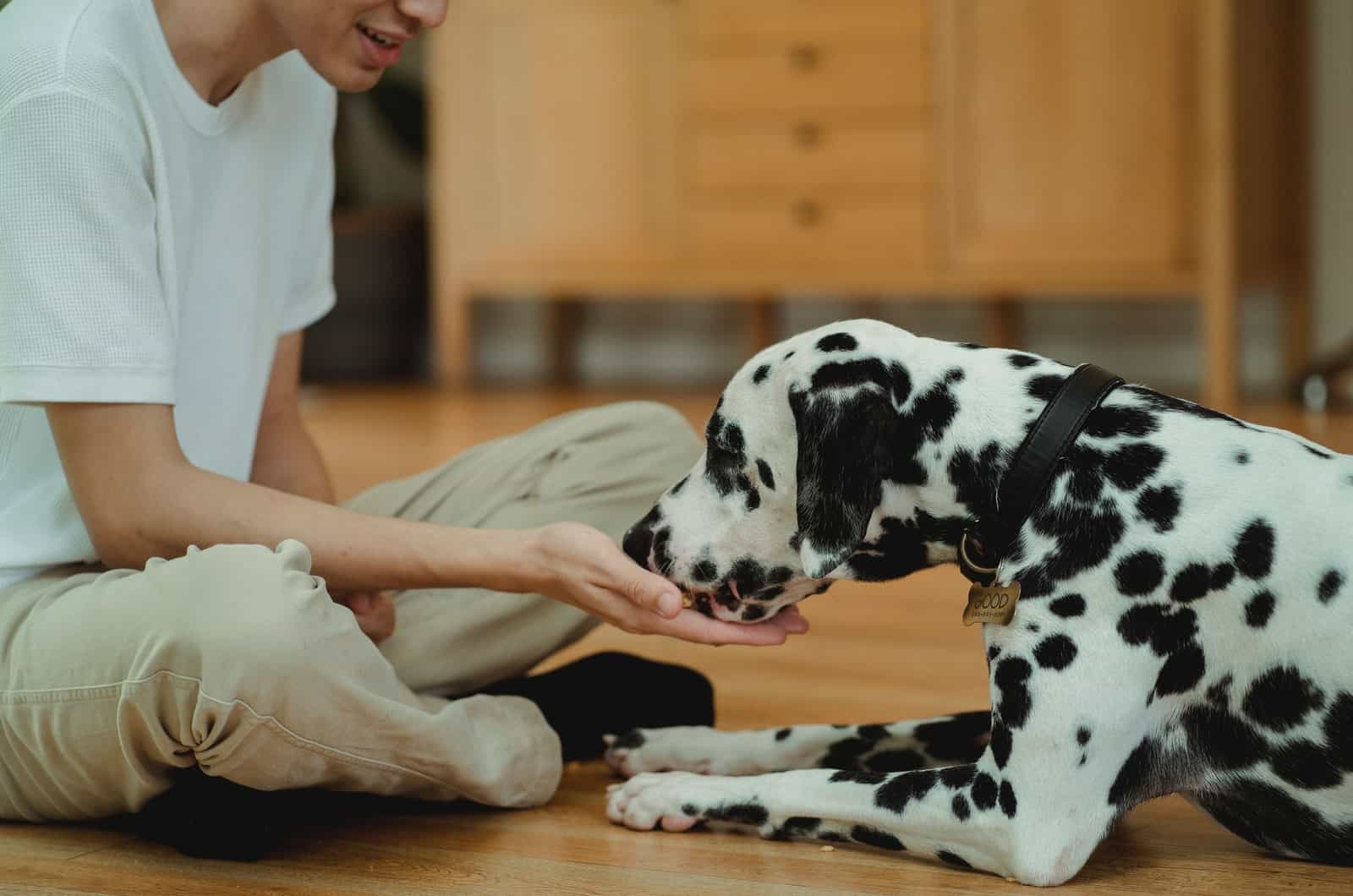
Why Is My Dalmatian Rejecting Food?
There are plenty of different factors that might be causing your Dalmatian to stop eating.
Appetite loss can be a result of certain dental or health issues, treatments, social or emotional challenges, irregular feeding times, or meal selections.
If you notice that your dog is not consuming food and is instead puking or seems to be having diarrhea, you should get in touch with a vet as soon as possible.
Can My Dalmatian Become A Vegetarian?
Even though they like meat more than anything else, Dalmatians may thrive on a plant-based diet.
Because many kinds of meat contain purine levels that range from moderate to high, a vegan diet could actually be beneficial for the Dalmatian.
It is important to bear in mind that this type of diet might not be able to provide your Dalmatian with enough protein or other essential nutrients that it requires.
However, this can be solved by feeding your dog foods or supplements that include some vitamins which a vegan diet does not provide.
Are Dalmatians Big Eaters?
Dalmatians consume a substantially higher amount of food because of their large size and high level of activity.
To consume all of their stored calories, they also require a lot of physical activity.
A Dalmatian’s risk of obesity will increase if they don’t get adequate exercise.
That is why you need to take good care and be able to differentiate between your pup’s daily need for food and its wishes to eat, although it’s not hungry.
Wrapping Up
A Dalmatian feeding chart is a very useful tool for owners of this dog breed, as it helps them track the development of their pups.
This way, you will be able to recognize if your dog is having certain health issues or obstructions in growth that might be a result of improper diet or genetic heritage.
Taking care of a Dalmatian’s diet can benefit these pups a lot in terms of life expectancy. If your pet is fed properly, its lifespan can go up to 15 years.
Keep in mind that puppy food might be appropriate for Dalmatian pups, but only before they become fully mature. You will need to switch your dog to adult food as soon as they turn one.
If you’re not sure how to feed your canine, you can always ask a vet or a certified dog food nutritionist for advice.
READ NEXT:
The Dalmatian Colors: Do You Think You Know This Dog Breed?
How Much Do Dalmatians Cost? Crunching Numbers Black On White
